Your cart is currently empty!
Qing dynasty show styling–The good, the bad and the ugly (Make-up & Accessories episode)

The most successful part about Yanxi Palace was how it has created a keen interest and a commercial market for its intangible cultural heritage crafts. In particular, the velvet silk flowers. One would almost mistake it for an advert promoting China’s soft power, but more than that, it actually has created an excitement and hopefully a commercially viable market for the continuation of the ancient crafts.
Below is a summary collage by the official channel on the range of intangible cultural heritage crafts from the Chinese imperial palace that was covered in the show.
These ancient crafts include Kesi weaving technique, velvet silk flower making, golden thread couching, semi-machine embroidery, double-sided embroidery, forbidden knot embroidery, Kingfisher feather accessories (which also included gold/silver filigrees), cloisonne and gold/silver filigree.
I’ll save the best for last. FIRST, I’ll be technical and talk about the good and the bad parts.
THE GOOD
Cloud Shoulders (云肩)
This is one element of dressing during Qing dynasty which is hugely popular, but greatly neglected in most Qing dynasty shows. Cloud shoulders are so iconic of Chinese dressing that it was even used in Alice in Wonderland!

Han Chinese women had cloud shoulders initially to keep the collar area of the dress clean from the hair oil they use and they were a separate piece from the dresses underneath.
It slowly evolved to become extremely elaborate and became a showcase of fine embroidery work as well.
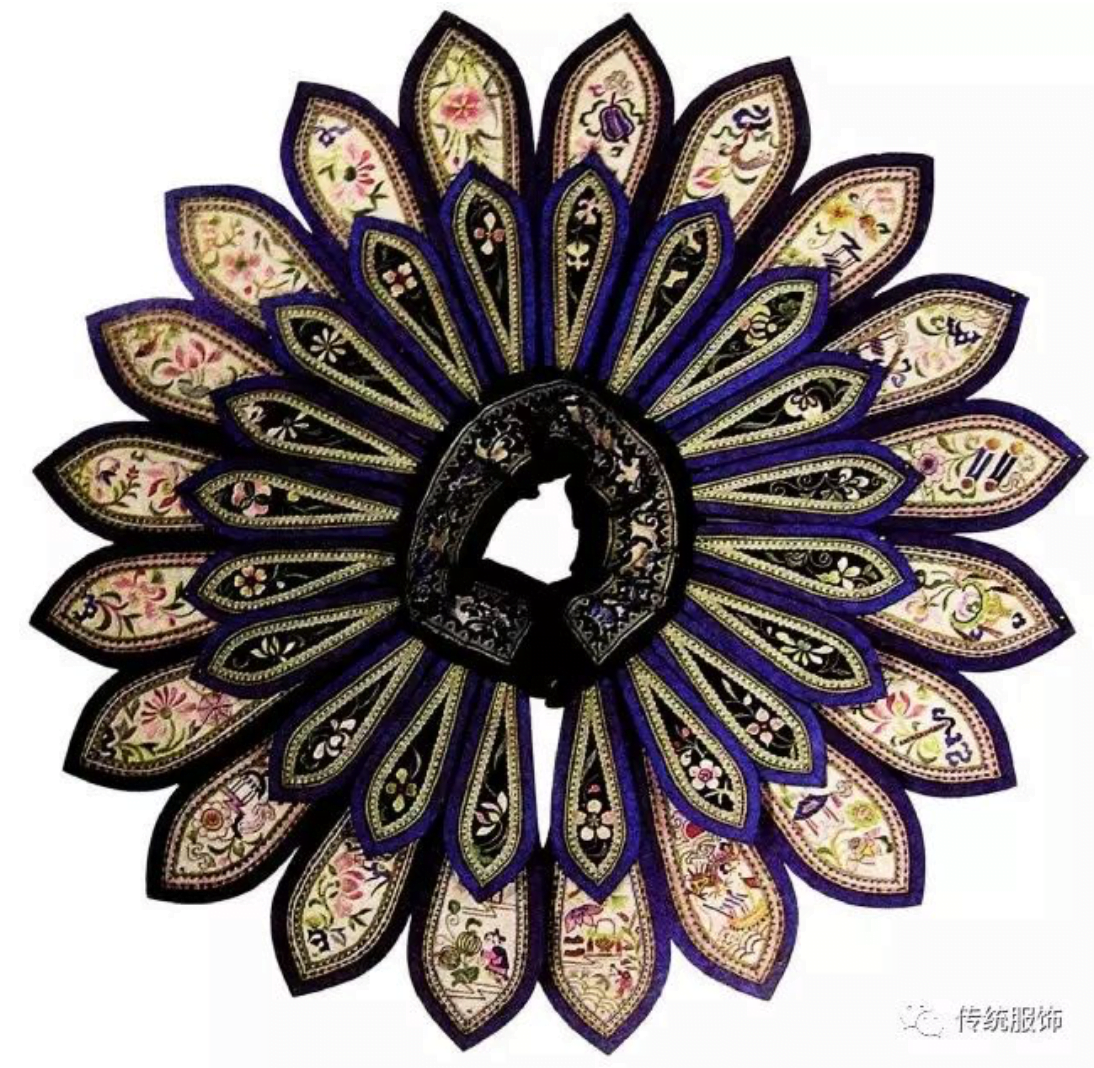
However, as it remained largely a Han Chinese accessory, it is no wonder that many stylists would not incorporate them into their production. Especially since given their intricacies, it would increase the cost of production greatly.
We do see that the playwright did try to emulate what’s been painted during Emperor Qianlong’s grandson’s period below:
Scarves & cloth strings hanging loosely
So we’re probably really used to the white scarf around the neck in shows as though the white scarf was supposed to be some standard wear:
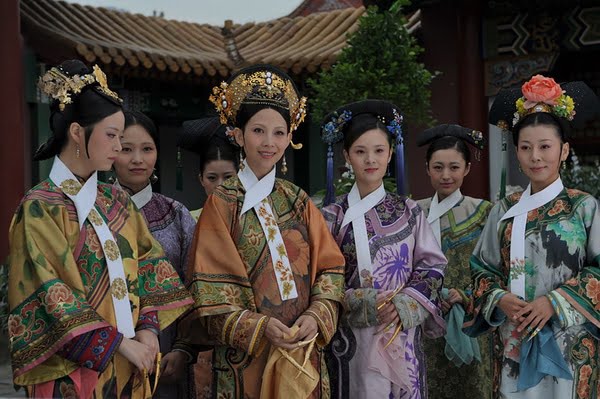
Reality is, Yanxi got it right instead based on a foreign missionary’s painting of the same era:
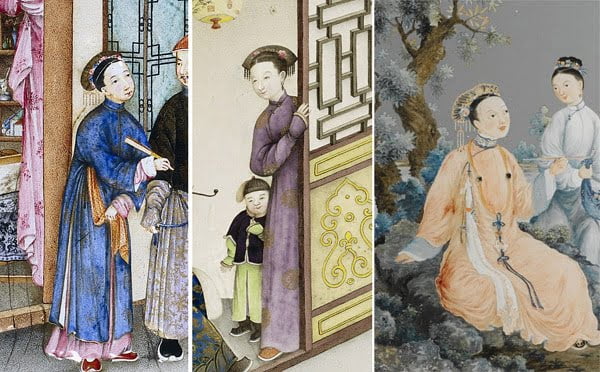
The white scarf around the neck is only usually used when they are wearing collarless/round collar dresses, and the white would be used to conceal the neck portion
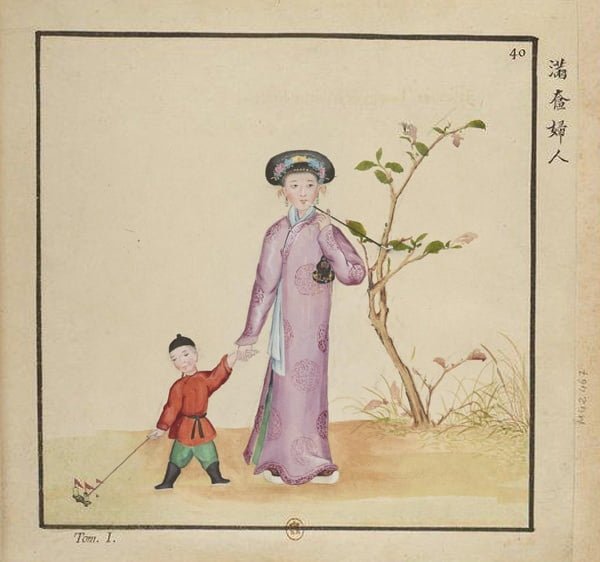

They even got the detail portion with cloth strings hanging loosely and the waist accessories which were very much Han Chinese. They look like the Forbidden Steps accessories which ancient Han Chinese women wore to remind themselves to walk slower. Although they can also be scent pouches.
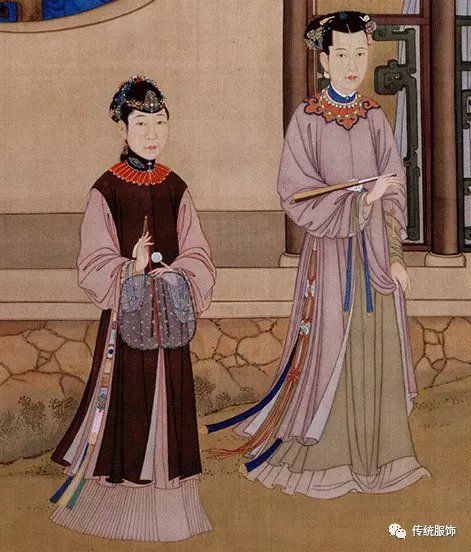
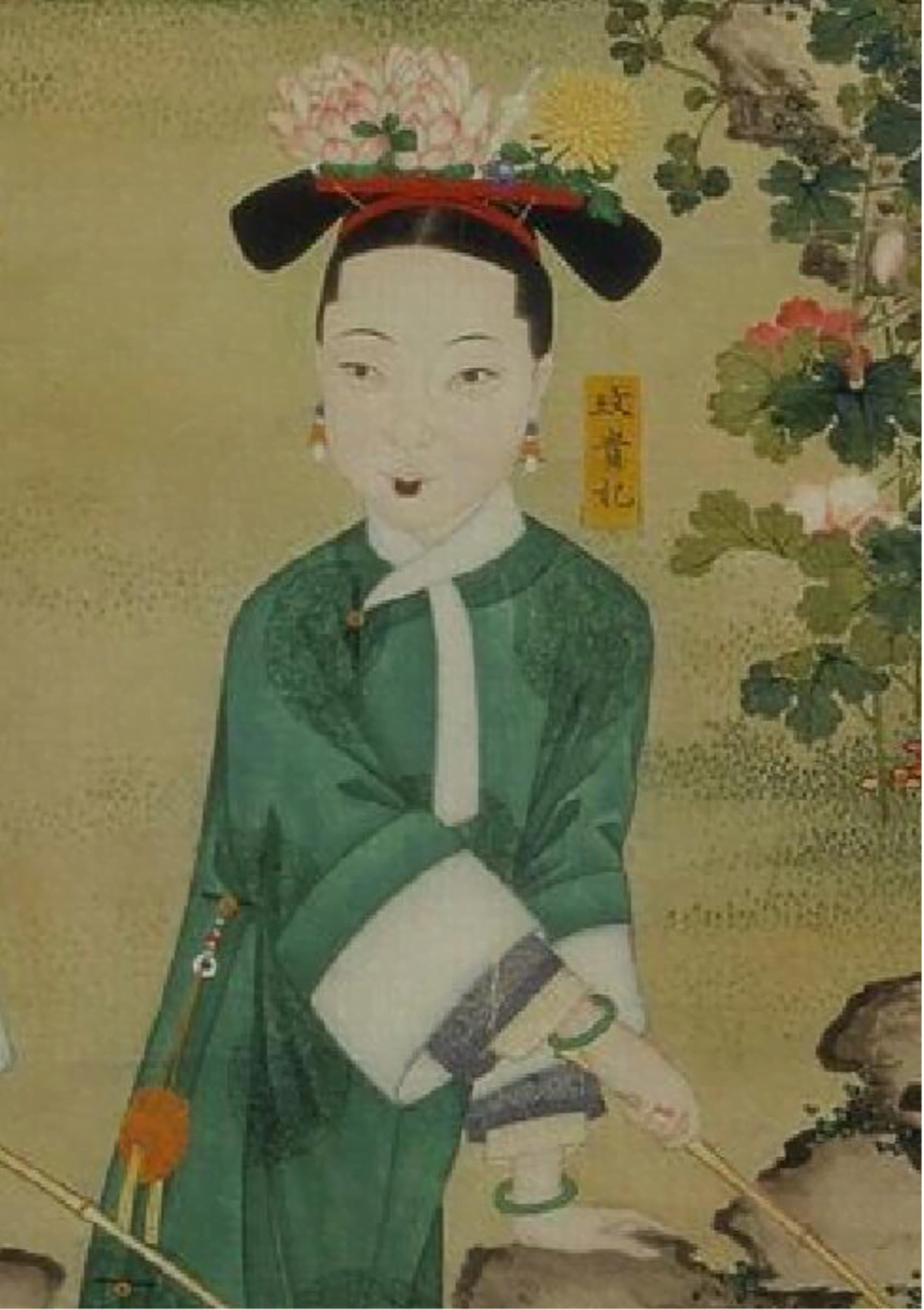
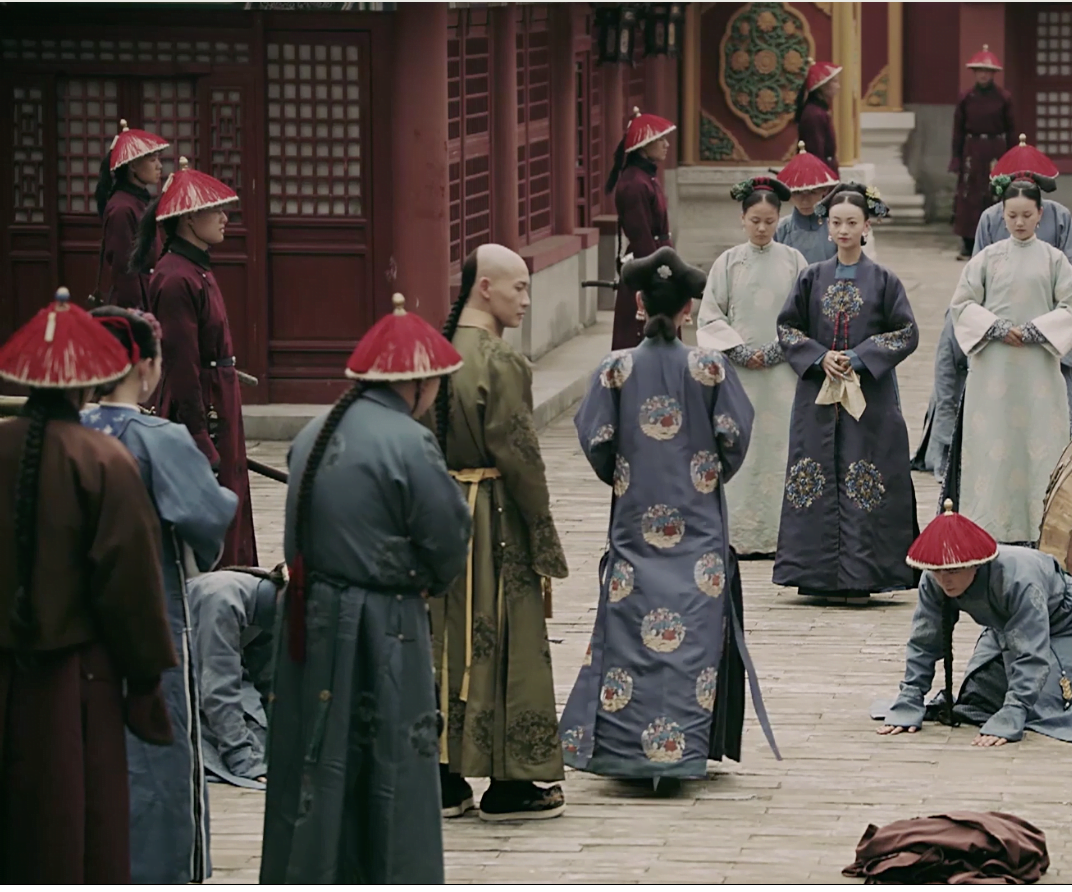
Earrings & lipstick application method
If you noticed, women have 3 earrings in each ear in the show, just as in the paintings from the era. Ear piercings, like the shaving of head/cutting of hair was not a typical Han Chinese practice but it was the norm for the nomadic tribes. There were records that women from nomadic tribe even had as many as 8-9 earrings! Emperor Qianlong also gave the order to make it mandatory for all women of banners (like their aristocrat families) to have 3 ear piercings on each ear.
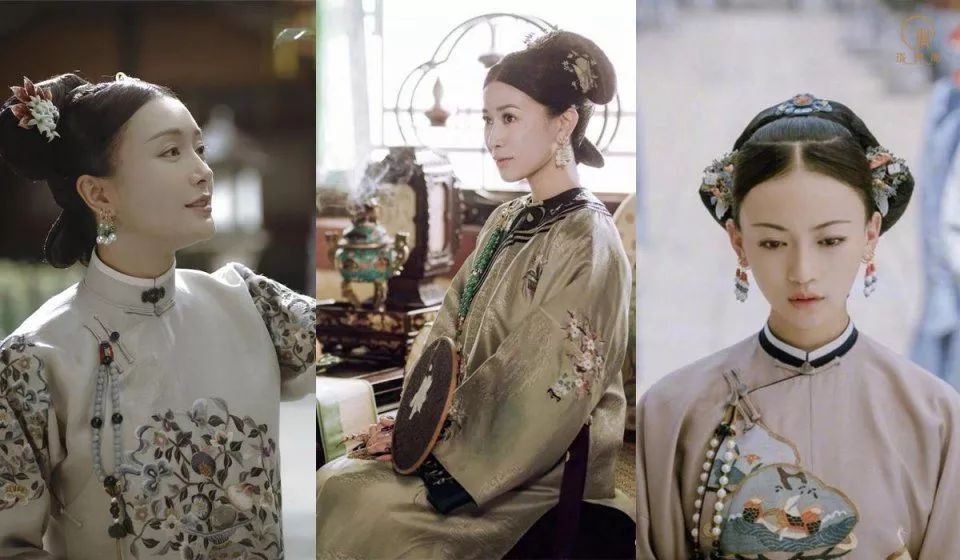
As with everything Chinese, everything is symbolic and hierarchical. So the types of pearls and the number of gemstones and pearls also would vary according to the status of women in the imperial court. Apparently, if you were just an attendant, you could only wear one pearl earring on each ear, with the other two earrings being just simple rings, while the Empress would wear the highest quality of pearls on all 3 piercings.

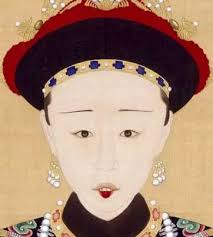
Also, if you’ve noticed, most of the actresses in the show looked really pale. That’s because they only applied lipstick on the lower lip, like how women did back in the early/ mid-Qing Dynasty. Occasionally they looked like they had some on the upper lips gradiating out as well, but I suspect it might have been a smudge from the bottom lips and the stylist possibly gave up trying to touch up for so many of them all the time!
18 beaded bracelet of the Qing court (清宫十八子) & number of buttons
One of my favourite accessories of Qing dynasty has got to be the 18 beaded bracelet that Qing dynasty men and women would wear on the SECOND button of their robe:
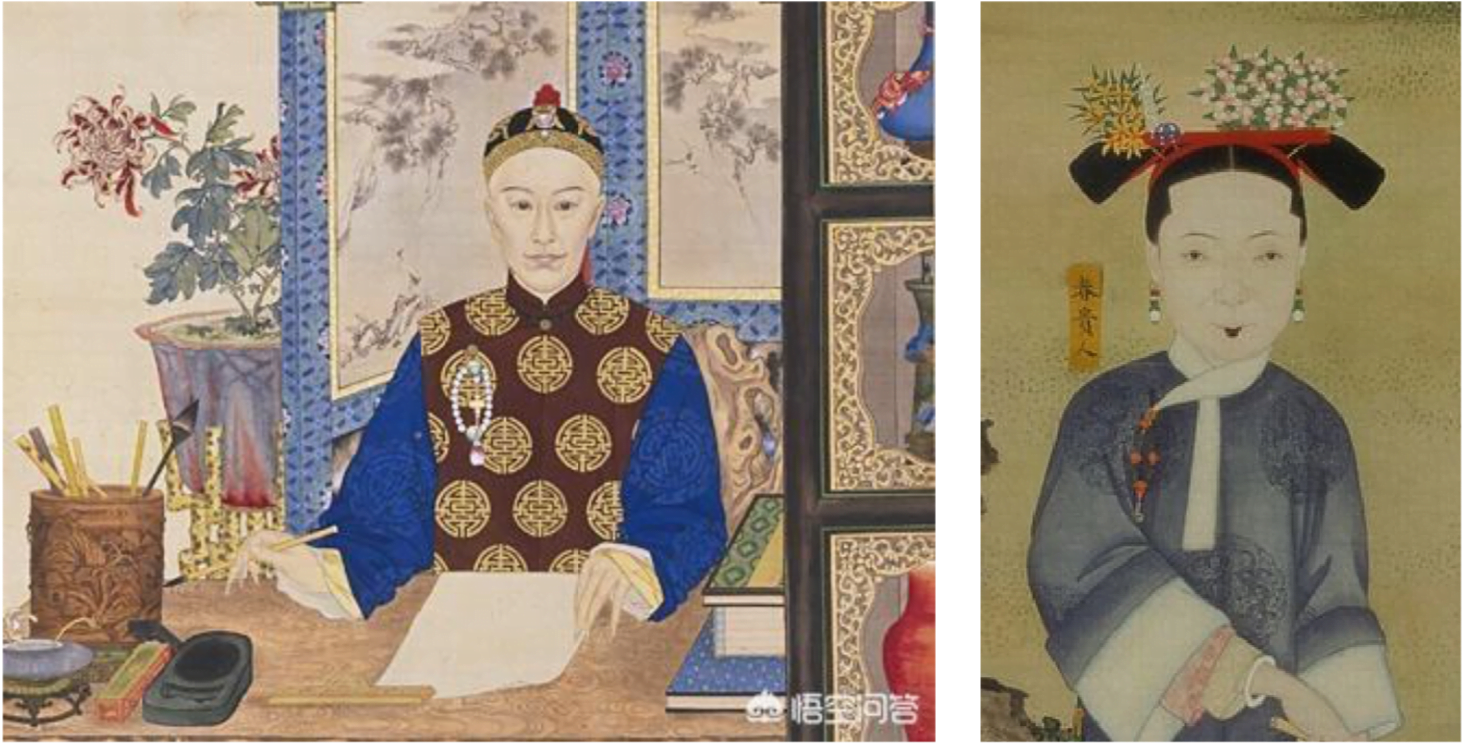
In most palace dramas, the stylists or tailor might’ve just made dresses with just a single button on the chest area but Yanxi actually made 2 buttons on the chest area NOT because it was the norm but I think they wanted to show that they paid a lot of attention to details. Most of the robes had only 1 button, but there were some dresses that had two buttons as well and the more iconic ones would be the photograph of Empress Dowager Cixi.
Unlike the court beads which went with black tie formal attire where there would be a strict protocol and hierarchy of what kind of beads could be worn by which person of a specific rank, the 18 beads accessory was pretty democratic. Anyone could use any type of beads or colours.
THE BAD
I’m trying very hard to nitpick.
Integrated cloud shoulder
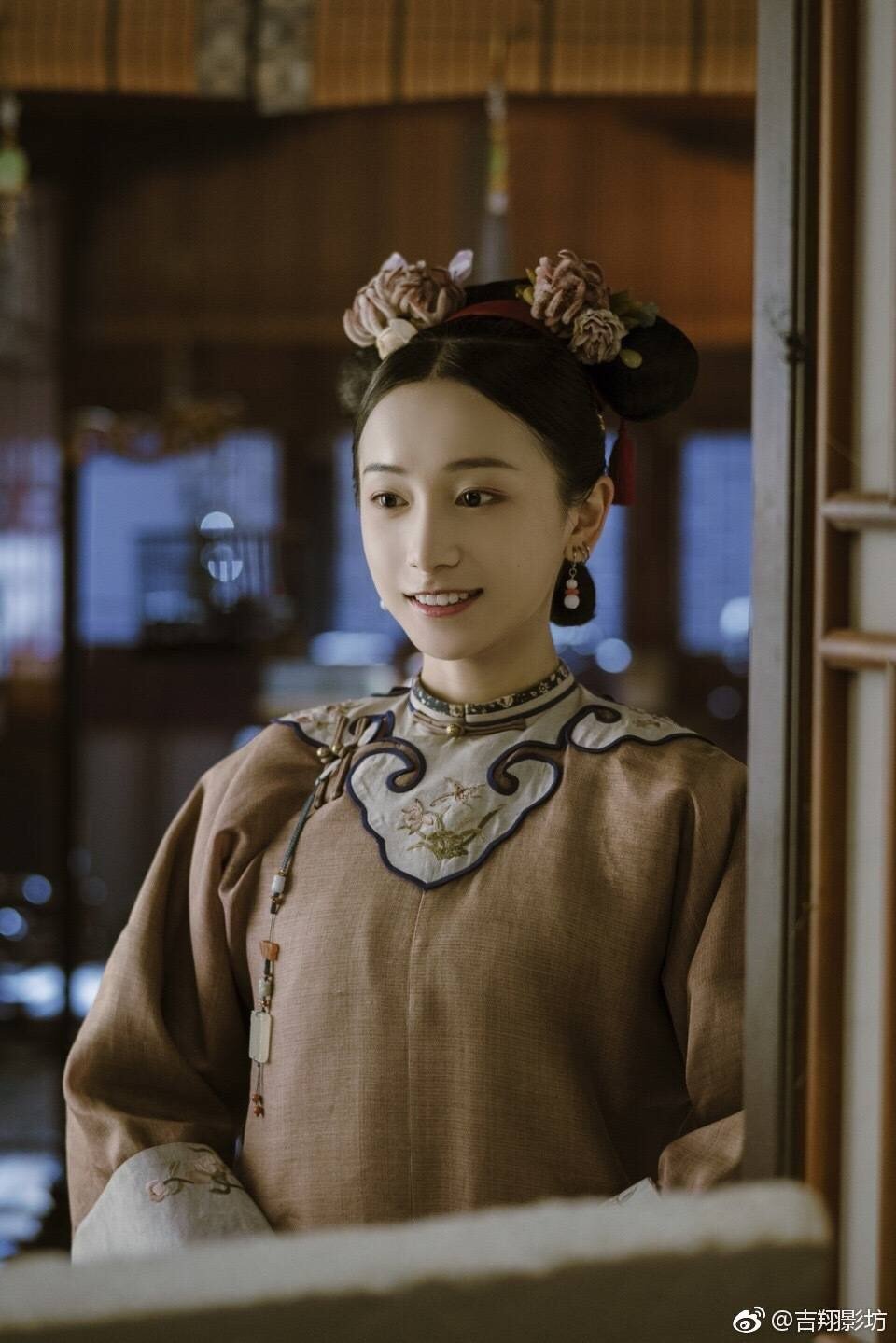
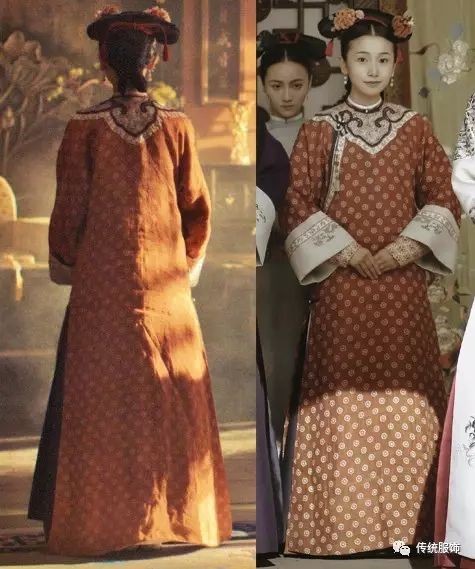
Typically, the cloud shoulder was an add-on, and a Han Chinese accessory.

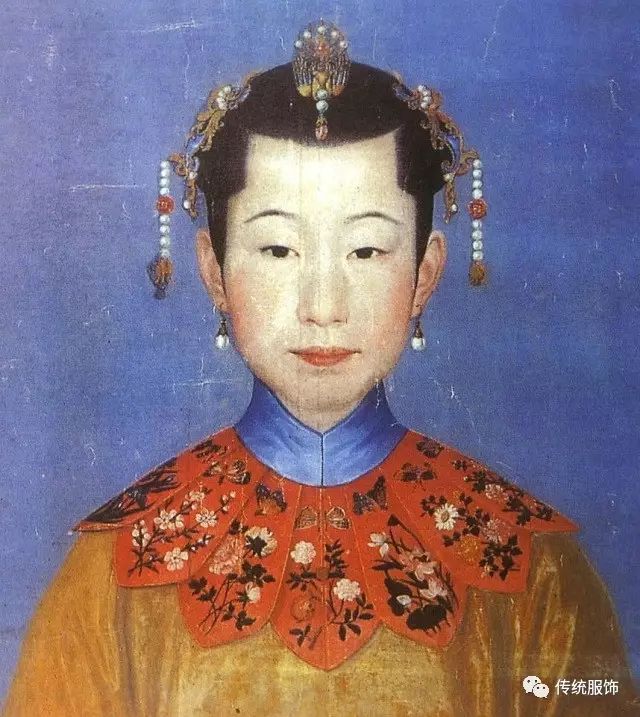
When integrated as an embroidered pattern on blouses, it was mainly for Han Chinese women in the form of a long top blouse.
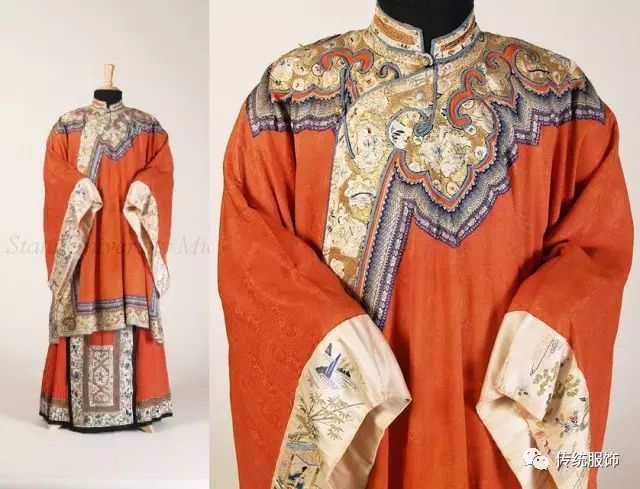
It’s only when it comes to late Qing that the Manchurians would integrate this kind of design into their long robes.

18 Beads on the THIRD button
I’m sure careful observer or reader would’ve noticed that in the Yanxi Show, the button which hung the 18 beads was the third, not the SECOND. It’s only when you are wearing an overcoat that’s when you could move it to put on the button that’s at the armpit.
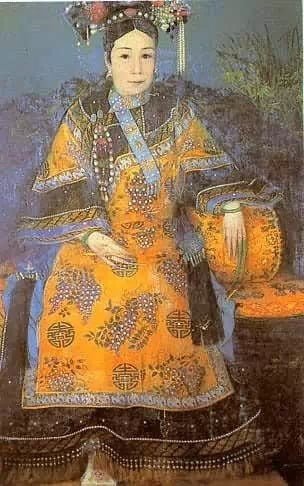
THE AMAZING
Come on, we all need to be a bit more encouraging and positive towards genuine attempts to inch towards historical accuracy! Here are a few amazing crafts that are featured or mentioned in the show:
Silver Peacock threads (孔雀羽线)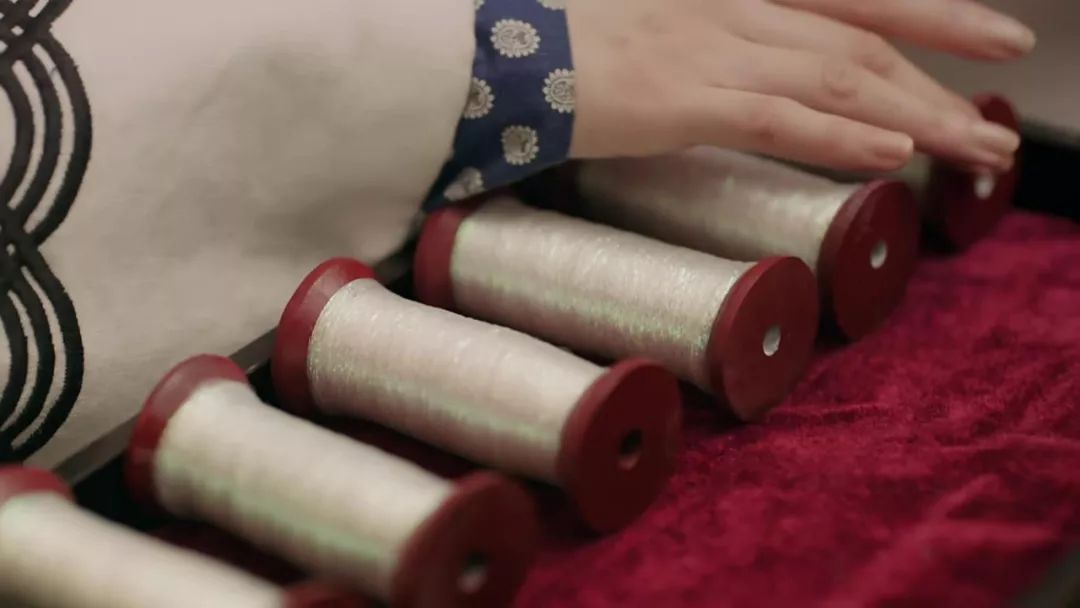
Feathers have long been used in all types of ways to accessorise and decorate people and their dresses for their brilliant colours that never fade with time. This type of string existed in Chinese records as early as 500 BCE (yes, you got that right, 2,500 years ago).
You basically rub the feather strands (not the entire feather but the soft loose strands) with silk threads, then together with real gold threads. I read somewhere that it would take someone an entire day just to create 1m of such thread.
The end product looks like this:
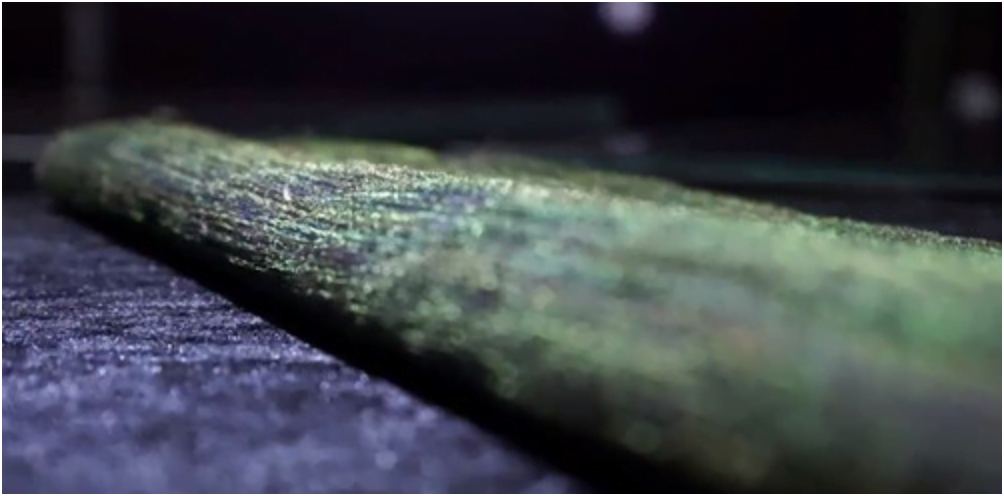
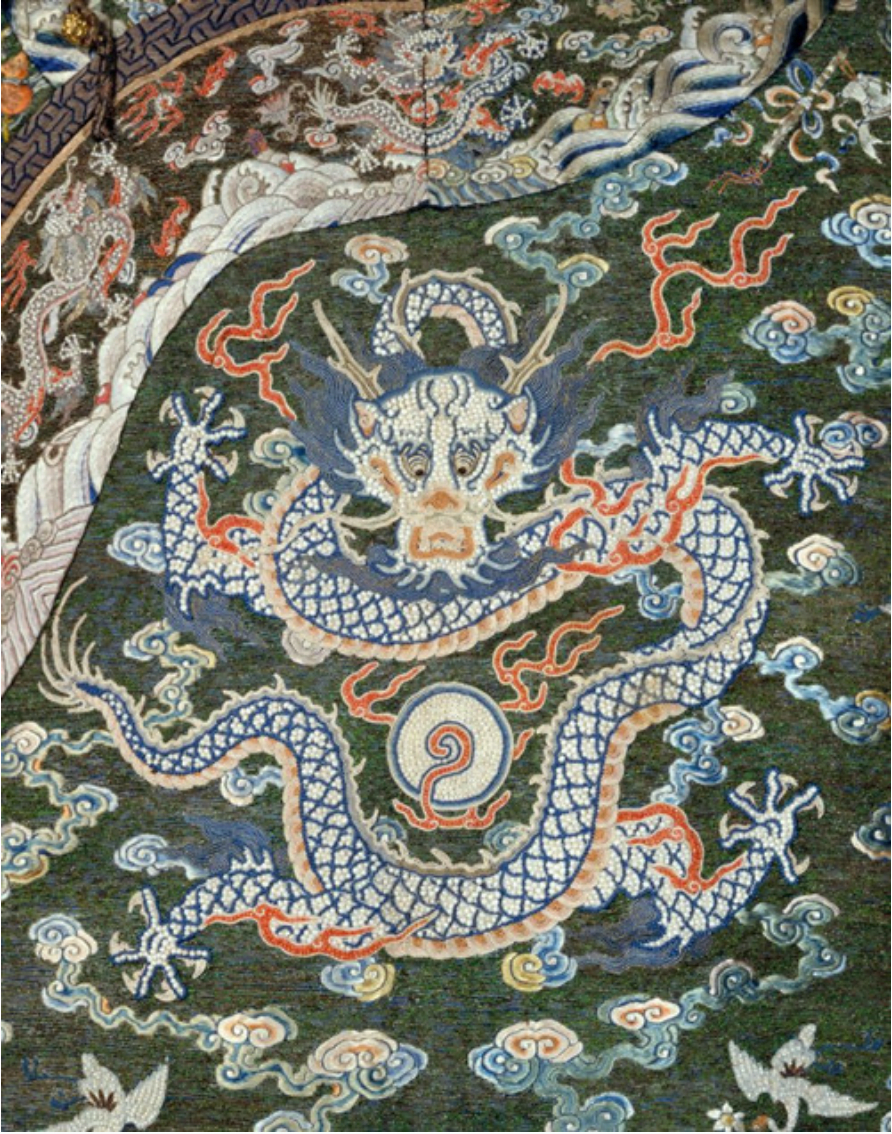
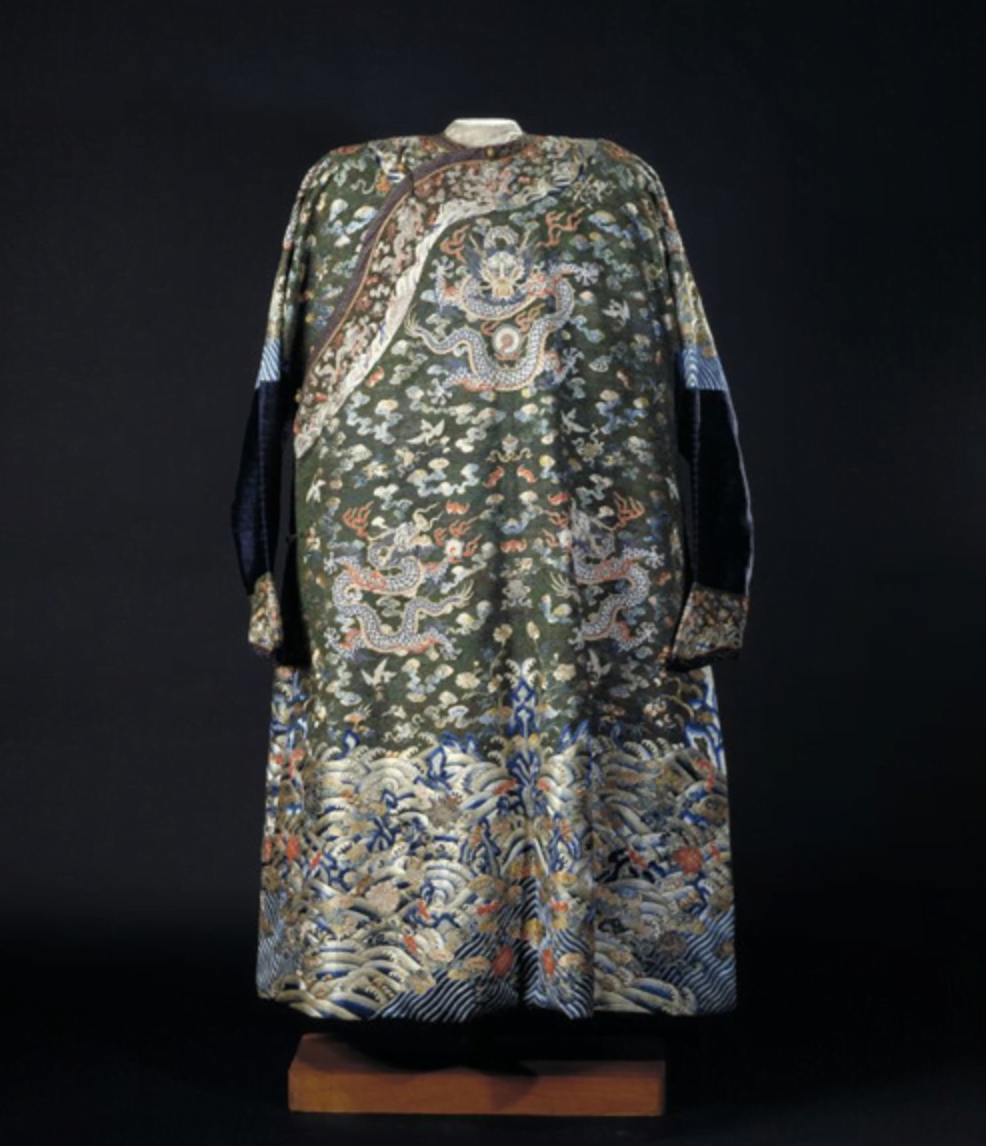
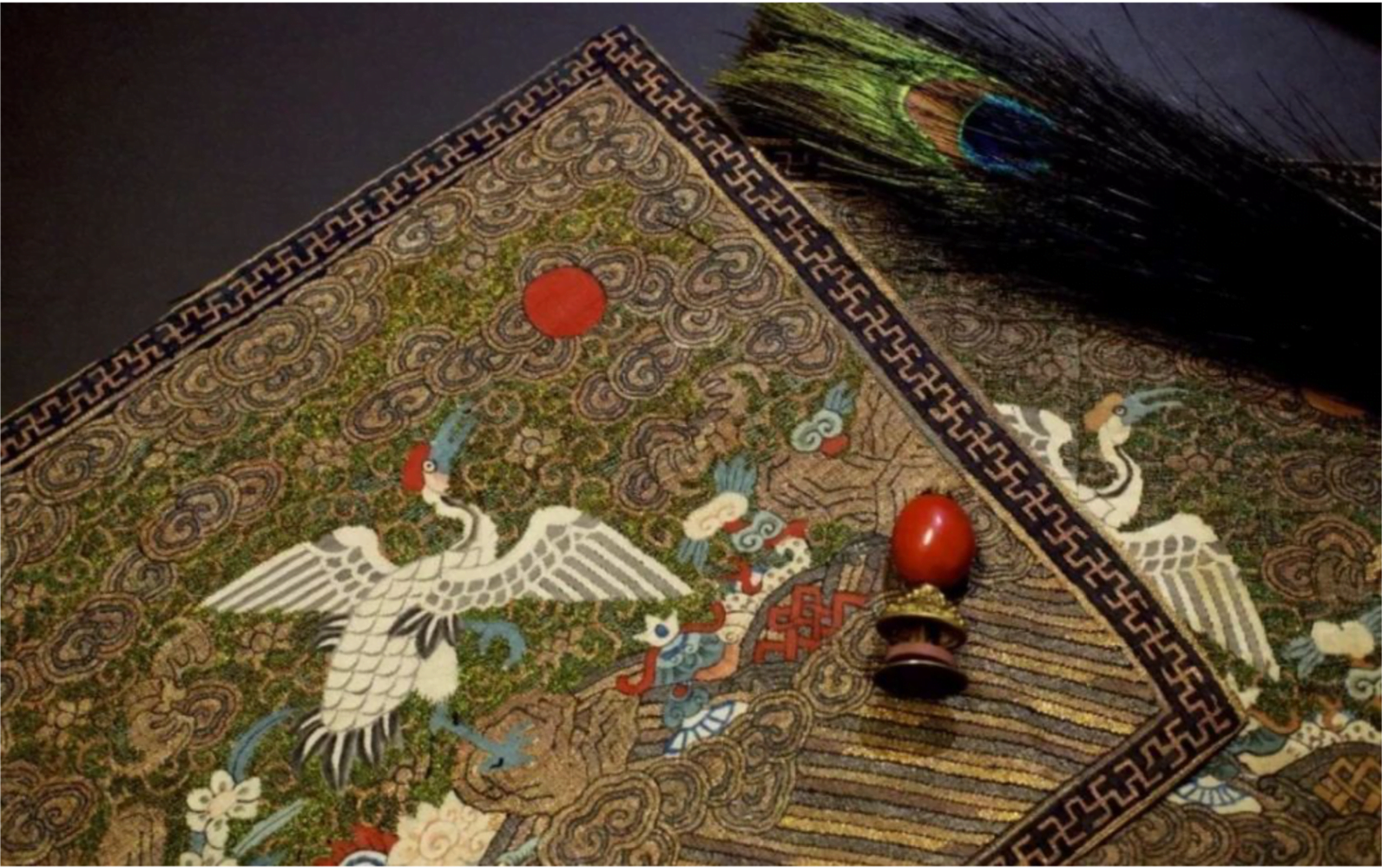
I know for a fact that pictures NEVER do justice to actual objects when it comes to artefacts because it cannot show the texture, the extremely thin threads, and the slight shimmer and bright colours that change slightly with light.
Kingfisher feather accessories (点翠)
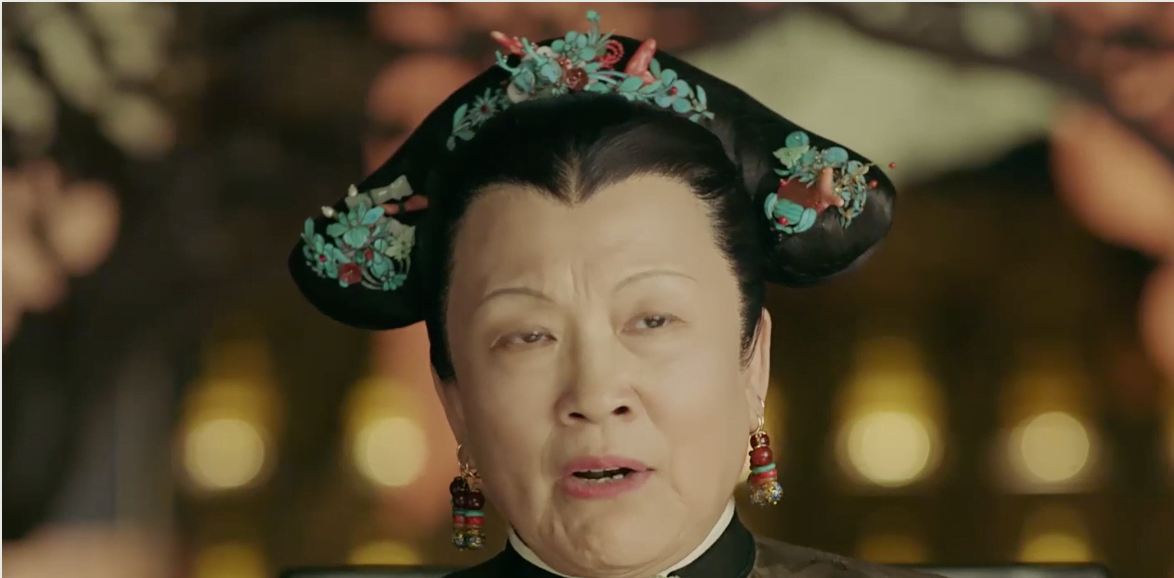
If you’ve seen kingfisher before, you’d know that they are extremely small birds. And their feather, even smaller. On top of that, only a few specific parts of the bird’s feather could be used because mostly the rest are brownish colour. Even within one feather, only the topmost part is blue. So many birds were sacrificed for their feathers just for a tiny part of an accessory.
The Kingfisher feathers were separated into “hard feather” and “soft feather”, with hard feather being the larger ones that’s about 4-5cm long (only about 2-3cm can be used), and the soft feather would be about 1-2cm long (only about 0.8-1cm can be used). For an area as small as 1cm x 1cm, you would easily need about 20 soft feathers or 5-8 hard feathers. The soft feathers are especially precious because I think they come from the head or the chest (I’m not very familiar with bird feathers’ location but it’s not available in abundance). So just imagine how many birds would have to be killed for their feathers for that amount of accessories and for women’s vanity.
So it got so bad at some point during the Qing dynasty, that kingfishers became endangered, and there was an imperial edict to forbid the killing of kingfishers. Yes, the ancient Chinese were very environmentally conscious contrary to popular belief.
And that is also why there was a surge in the use of cloisonne in accessories making to achieve similar colours.
Famous Chinese opera performers like Mei Lan Fang were said to have their entire headpiece made up of soft feather as the top grade type of accessory. The finer the feather, the more intricate and flawless they look, and the better the shine. But as with everything, only those who are in the circle would be able to appreciate its beauty cos otherwise, if nobody tells you, you wouldn’t notice it.
Many things in the Chinese culture aren’t as opulent or apparently luxurious. It’s only when you learn about the process behind it, and realise that there’s no way you can achieve the same look in any other way that’s when you might go “JUST TAKE MY MONEY!”. I know cos that’s me. Yes, I learnt this controversial craft when I was in Beijing, but I haven’t practised it since. I just wanted to know how it’s done so I can appreciate its history, complexity and craft.
Cloisonne accessories (烧蓝+花丝镶嵌)
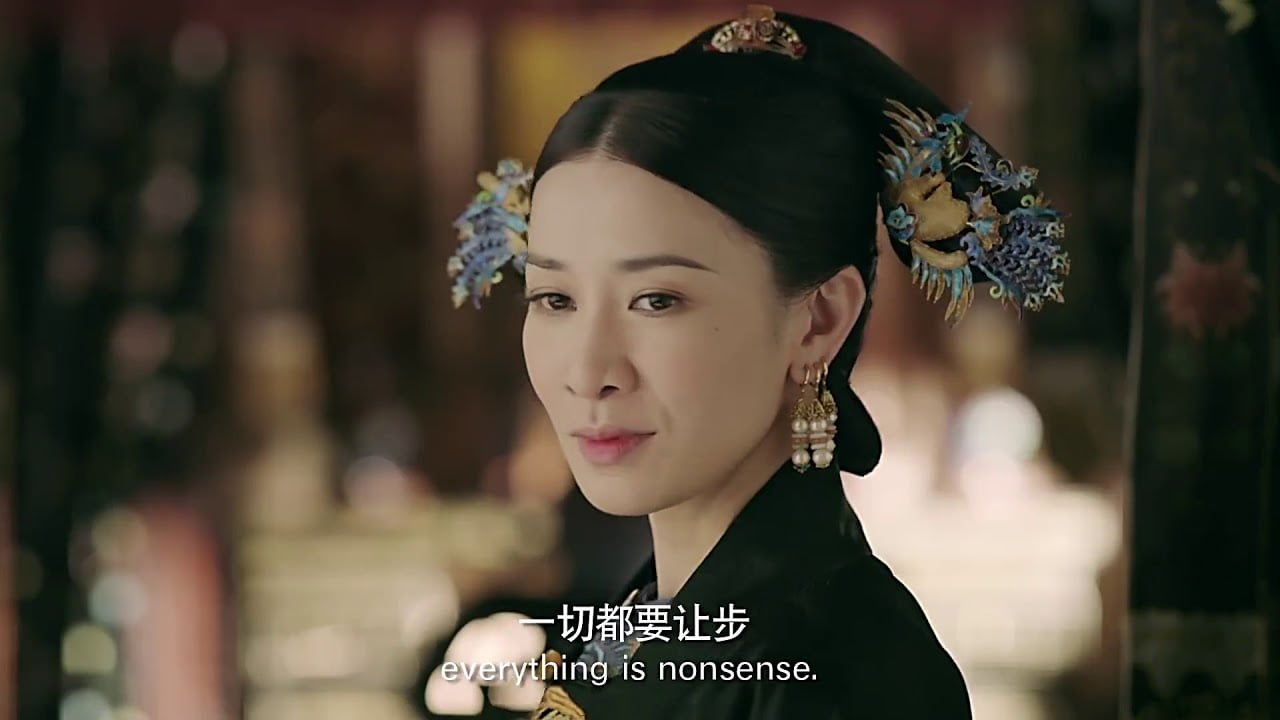
Another technique that I’ve learnt from a Beijing intangible cultural heritage craftsperson is the filigree and cloisonne techniques. Like many things in the palace, there was a strict division of labour when it comes to crafts, and an accessory does not consist of a single craft. So for the cloisonne accessory, there would be filigree, gemstone setting (note the Chinese don’t traditionally create/cut specific/symmetrical shapes from the gemstones unlike the West–they set them in their natural shape), and cloisonne.
This craft is one of the 8 impossible crafts of Beijing/the forbidden city (燕京八绝). Maybe I’ll do one on the 8 crafts one day.

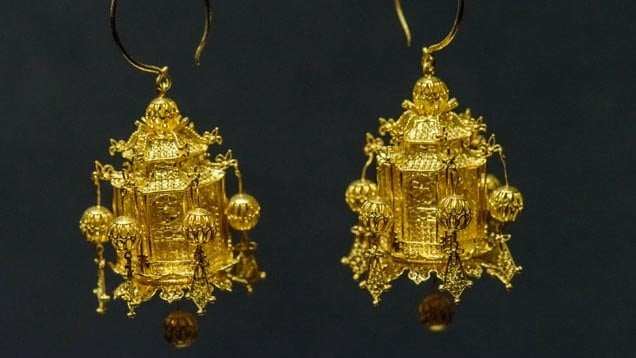
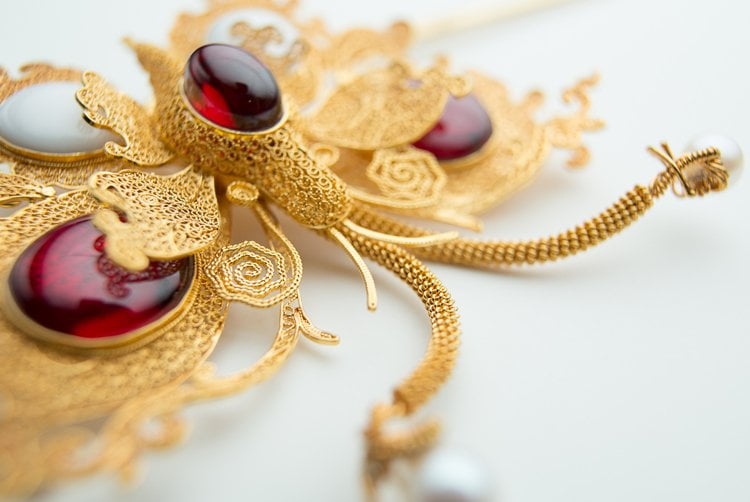
In a production line, one person would be strictly in charge of making fine silver threads, and another would be in charge of making fine patterns, another would be welding them together, and so on and so forth. When China first became a Republic, there was a factory set up for the production of such, with a clear division of labour so each division of craftsperson would not know the job and techniques of another division’s. So typically most people wouldn’t singlehandedly be able to finish one artwork. But of course, there are also craftsmen who have been in the line long enough, and rotated through this line, or passed down through apprenticeship which would allow them to do so. That’s far and few in between.
Cloisonne and filigree are both not native to China–they’re perfect examples of foreign cultural influences to China over thousands of years ago and China had made it its own by combining them in unique ways, and by infusing their own aesthetics.
I originally went in to learn the craft thinking that I would like to make my own designs. But after learning, I realised the time, the technical mastery and the equipment needed are just too much! I am actually getting a steal if I commission them to make my design instead! Apparently most overseas/Singaporean orders were for weddings.
Velvet Silk thread flower accessories (绒花)
Since Tang dynasty (about a thousand years ago), velvet silk flowers (like pompom texture flowers using silk threads, not those synthetic ones) have been used as a tribute to the emperor, so only the imperial court could use these items. It was not until about 500 years later that the average joe could have access to them.
They are called Rong Hua (similar sound as properity 荣华) so they were often worn during celebratory occasions by the consorts.
Thanks to (but no thanks) to the Yanxi palace drama, orders for velvet silk flowers now has closed, and has a waitlist of at least a year if they reopen…. Fortunately I grabbed a few earlier!
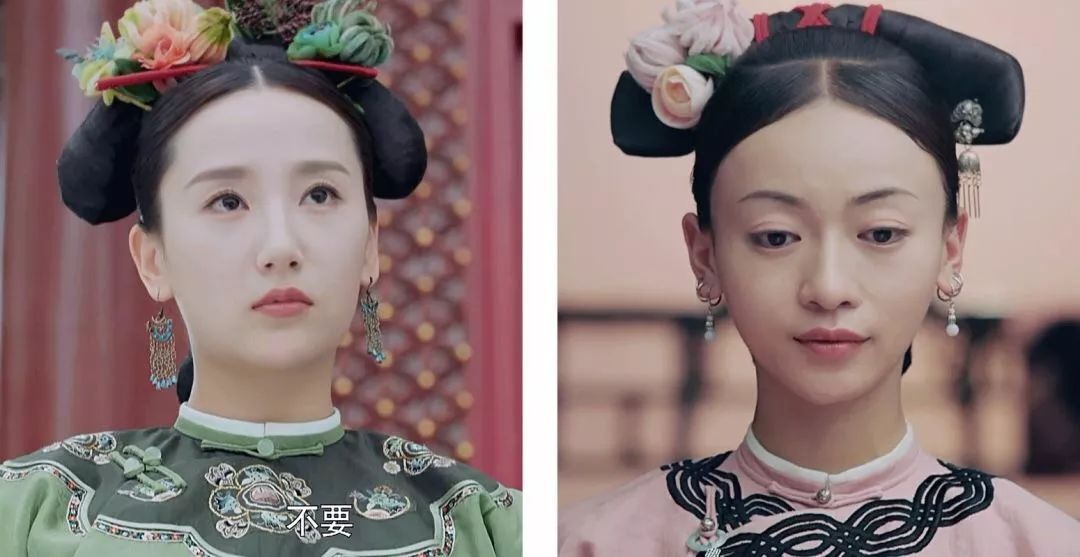
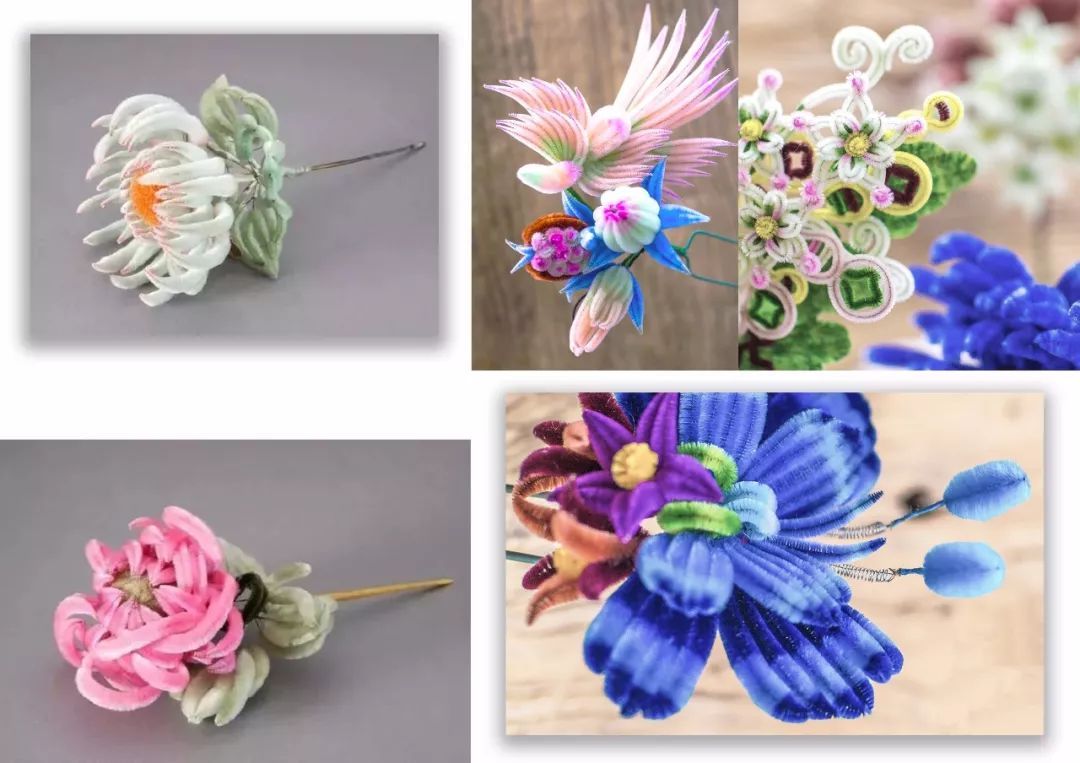
Gold Thread couching (盘金绣)
I see it in kimono quite often these days still, but I don’t know much about it at the moment.
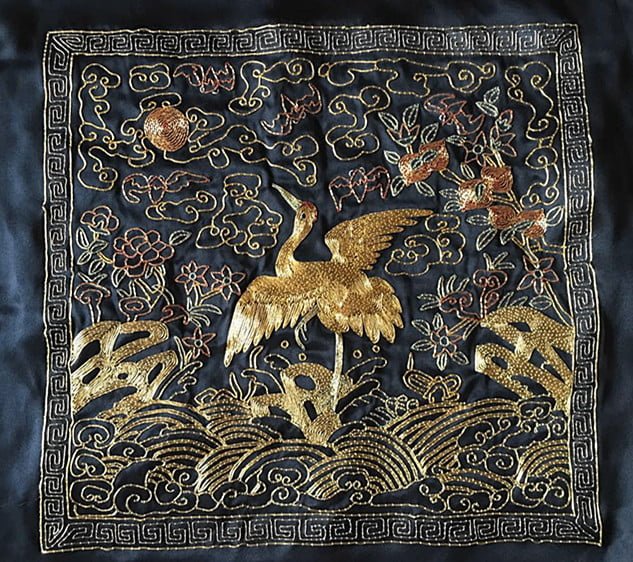
Forbidden Knot embroidery (打籽绣)

I’ve done a previous share on this topic, so will just reference below:
Since we are on the topic of the Forbidden Stitch, I googled for the English explanation online for its name cos it is not a direct translation of the term 打籽绣 which literally means making-a-knot stitch. I think it is the western marketing term to sell this kind of stitch and to orientalise it by associating it with the forbidden city and making a story about people going blind while stitching it.
“This type of knot is particular to the rich Chinese silk embroidery where patterns were filled with rows of such fine knots. Due to the eye strain and blindness that working on such knots caused, it came to be called blind knot. Interestingly, the name ‘forbidden stitch’ took shape either because this stitch became forbidden due to the ‘blindness’ it caused or because of the knots’ association to China’s Forbidden City, the home to the Emperor.”
According to a Chinese book, the earliest occurrence of this type of knot embroidery was about 2000 years ago in Mongolia. I suppose this might be a nomadic influence in the traditional Chinese embroidery world.
Kesi weaving (缂丝)
Kesi is a form of textile that dates back to over 2000 years ago to the Han dynasty. The special part about this type of weaving is while the thread runs from one end to another to form a pattern in normal weaving technique, kesi utilised a special technique that one can only see the specific coloured thread where there’s pattern, so it’s like a magical appearance of a thread.
AND, the two sides are the same pattern so there’s no front and back. It’s really an ingenious technique which you have to see to understand its brilliance. Unlike embroidery, it’s weaved pattern so it’s as flat as the piece of textile and not popped out, that’s why it’s called Ke Si (缂丝)which literally translates to carved silk.
I have one Kesi fan that would’ve cost you easily four digit SGD today. Sounds like a lot, but back in the olden days, there was a famous saying that an inch of kesi is worth an inch of gold because of its great complexity. And as with almost ALL the great crafts, such goodies were only exclusively used by the imperial family. Emperor’s robes were made of kesi as well–I actually saw a kesi robe when I was visiting the Metropolitan Museum! Because of the imperial family’s monopoly in this, even the Chinese didn’t know much about it.
There’s a great article about this craft which you can read HERE.

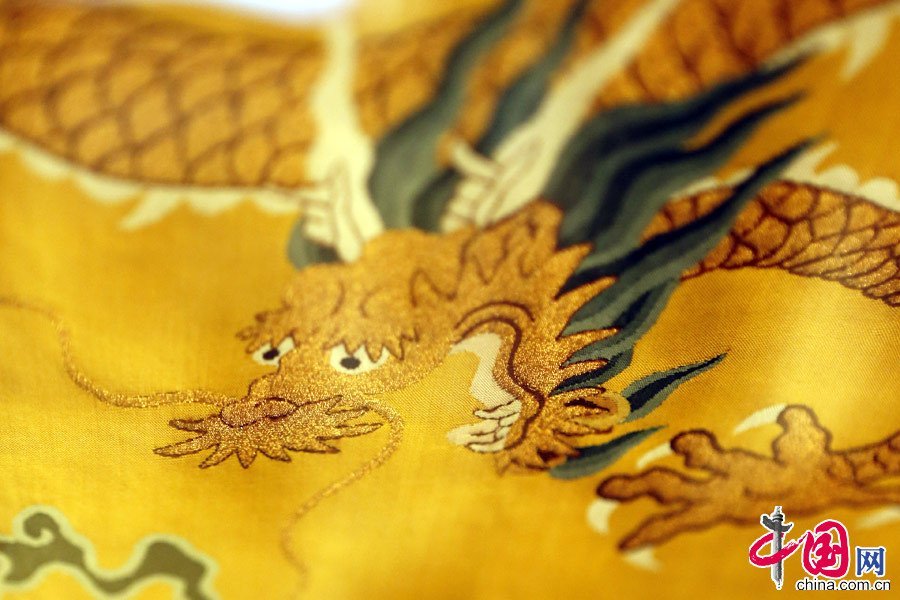
I came across a video of Japanese weavers using their fingernails to comb the threads called the Tsuzure Ori and wondered if it’s similar to the Kesi technique of weaving, and then I also wondered why they didn’t use the tools like in the case of Kesi cos they certainly looked kind of similar *shrug*.
Yanxi show used Kesi fans which were replicas of the fans that are in the collection of the Palace Museum. Lovely isn’t it? My dream is to own it one day too… It’s exorbitant, but nothing that money can’t get you in China!

Intangible cultural heritage crafts are my pet topic, and if I have all the time in the world, I would like to learn them and own at least one of each! I’m slowly making my way through this, and will hope to share more as I acquire more!
15 responses to “Qing dynasty show styling–The good, the bad and the ugly (Make-up & Accessories episode)”

I love this post about intangible cultural heritage. Thanks hanfugirl.

Pleasure~!

Is there a link to the videos which talks about these crafts? I’ve been watching this series via Viki streaming app and they have a short video about the clothing and I want to see more of it.

Not quite sure cos I don’t really watch videos. But you could search for the keywords and try! Cloisonné–烧蓝, filigree–花丝, kesi–缂丝, velvet silk flowers–绒花。 You can probably find a lot more on kesi and ronghua.

For the 18 bead accessory, were there any differences between the ones worn by ladies and gentlemen?
Did they serve any other purpose other than to adorn the second button? I think I remember the Empress from Yanxi Palace rub the beads while in contemplation.

I might be wrong, but based on whatever I could find and see, there’s no difference. The origin of it is for Buddhist chanting, 18 is a special number in Buddhism (though I have to make a disclaimer that I’m not religious so I’m not very familiar with the technicalities) but their imperial beads which they wore for formal ceremonies and occasions are 108 beads. So they’re kinda linked. But we can’t say that whoever wears the beads are religious, so over time it does appear that they serve decorative purposes too.

You wrote that the number of pearls and gemstones on accessories were according to status, how many pearls would the empress wear on her earrings? Did the earrings only consist of pearls or were they made of other materials, like for example jade?

Records on smaller informal accessories like earrings are very lacking, so there’s no record that I can find on such but to use pearls from a specific region (North-Eastern part of China) is a privilege and it is only available for the Empress. The more detailed record is availble for formal wear which is in the case of the court beaded necklace. Those were made from a variety of materials including coral, jade, amber, gold, pearl etc.

Big and round “Eastern Pearl” (the name for the special type of pearl” can only be used on the crown hat or on the court beaded necklace. irregular shape one can be used to be set on other things. Only the Emperor, Empress and Empress Dowager can wear the “Eastern Pearl”, and technically it can only be worn during official events.

Regarding gold thread couching embroidery aka goldwork, couching or laid work, you can still see this technique being used on Cantonese bridal qun kwa (裙褂), particularly the really elaborately embroidered ones stitched by hand.
(Example seen in this video https://www.youtube.com/watch?v=8knreJgNp_I)While gold and silver coloured threads can be embroidered directly into the fabric, metallic/metal threads have to be stitched on with a secondary thread – to couch is to literally lay down – because they are very fine metal wires or foil wrapped around a thread core. I would imagine the threads would unravel or get damaged if they’re forcibly dragged through the fabric.
I’m not familiar with the Chinese history behind the couching embroidery technique/goldwork, much of what I know about couching comes from Western resources (apparently the technique came to the West last in history from Asia).

Yes goldworks is not indigenous to Chinese. Kimono also still uses gold couching.

This is so interesting! I love shows that are culturally accurate. Your descriptions are also very helpful to understand the nuance behind each of the arts (and clothes and hair).
I’m from India, and I find it fascinating how similar certain techniques are between the two countries/ cultural behemoths.
There are definitely alot of cross cultural influences between the two! Especially w buddhism coming into China, alot of indian motifs and practices were brought in as well. In the Tang dynasty there were records of Indians serving as court officials in areas such as astrology/astronomy and mathematics.

Hi my name is Morgan McKinney I love the jewelry and the cloaks and outfits from yanxi palace and ruyis royal love in the palace where can I get jewelry like from the show and I would like to purchase a cloak like from the show I can send pics of the specific items I’m looking for

Hi! You may email me at hanfugirl@gmail.com for details on the order such as the velvet flowers from yanxi Palace, the filigree and cloisonné as well.

Leave a Reply